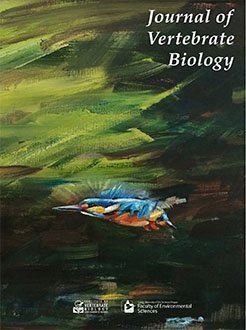Lorena Ortiz-Jiménez, Ilad Vivas, Isabel Barja
Journal of Vertebrate Biology 73 (23082), 23082.1-15, (17 January 2024) https://doi.org/10.25225/jvb.23082

KEYWORDS: faecal cortisol metabolites, faecal oestradiol metabolites, faecal progesterone metabolites, steroid hormones, physiological response, vaginal cytology
The low reproductive rate of many mammal species is detrimental to their survival as it can lead to a decline in population size. The European mink (Mustela lutreola), the most endangered mammal in Europe, has difficulty reproducing in captivity due to sensitivity to maintenance and handling conditions. To improve captive breeding success, ex situ conservation programmes use vaginal cytology to determine the optimal time for mating. We investigated whether frequent vaginal cytology induced an increase in physiological stress response in European mink and affected the level of sex hormones metabolites. We collected faecal samples from eight females of various ages and quantified levels of faecal cortisol metabolites (FCM), faecal progesterone metabolites (FPM) and faecal oestradiol metabolites (FEM). We found that FCM, FPM and FEM levels varied during the experiment and that there was a positive correlation between the three hormones. Furthermore, FCM levels were influenced by age and individual factors, with older minks showing the highest levels. Based on our study, we conclude that frequent vaginal cytology at this conservation centre appears not to infer any added stress negatively affecting the captive breeding rate, a finding crucial for ex situ conservation programmes. By better understanding this species' physiology, we can help ensure its survival and contribute to the conservation of other threatened mammal species.

